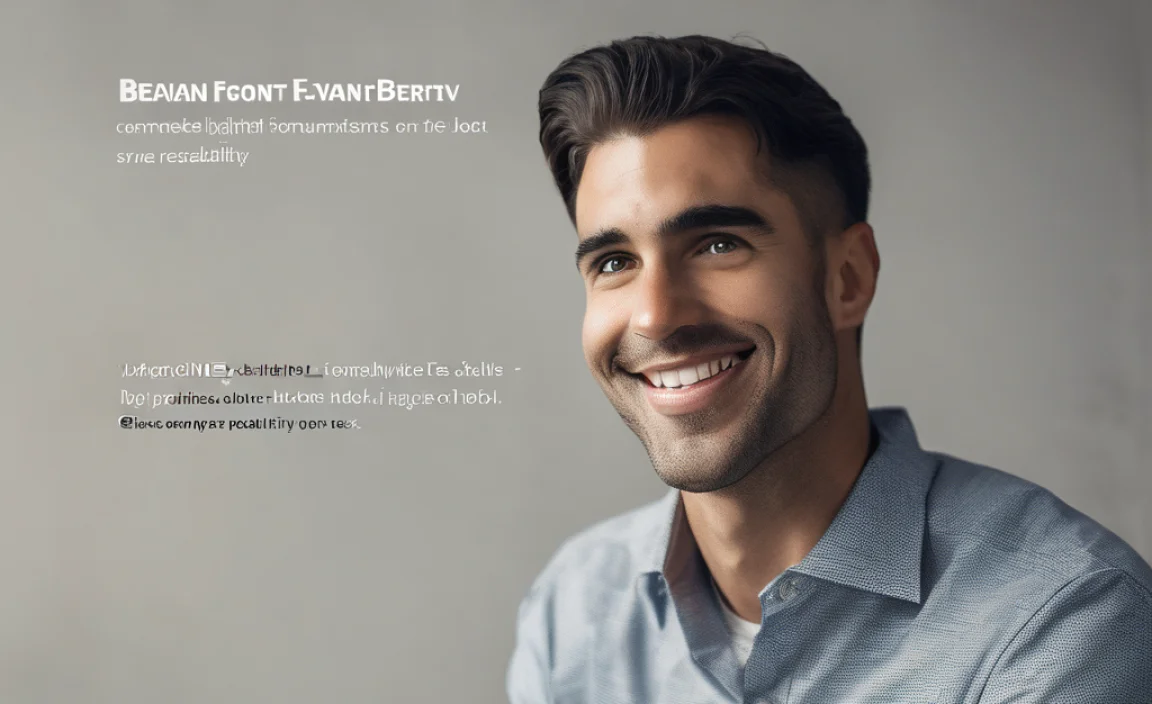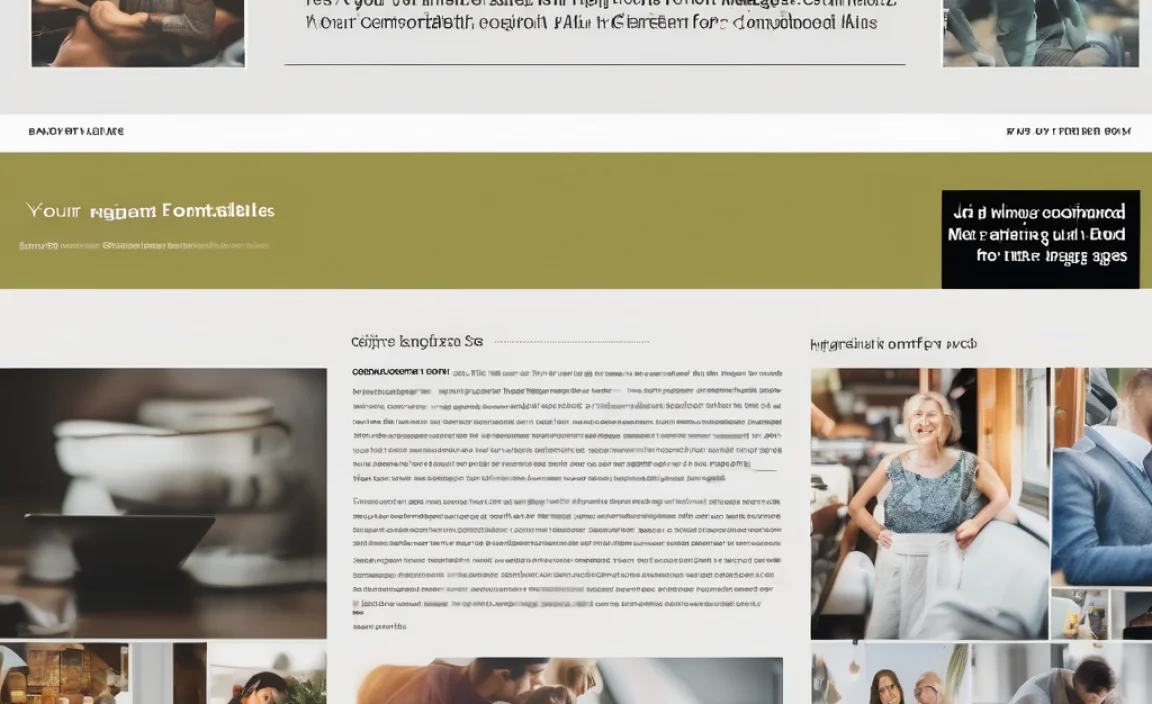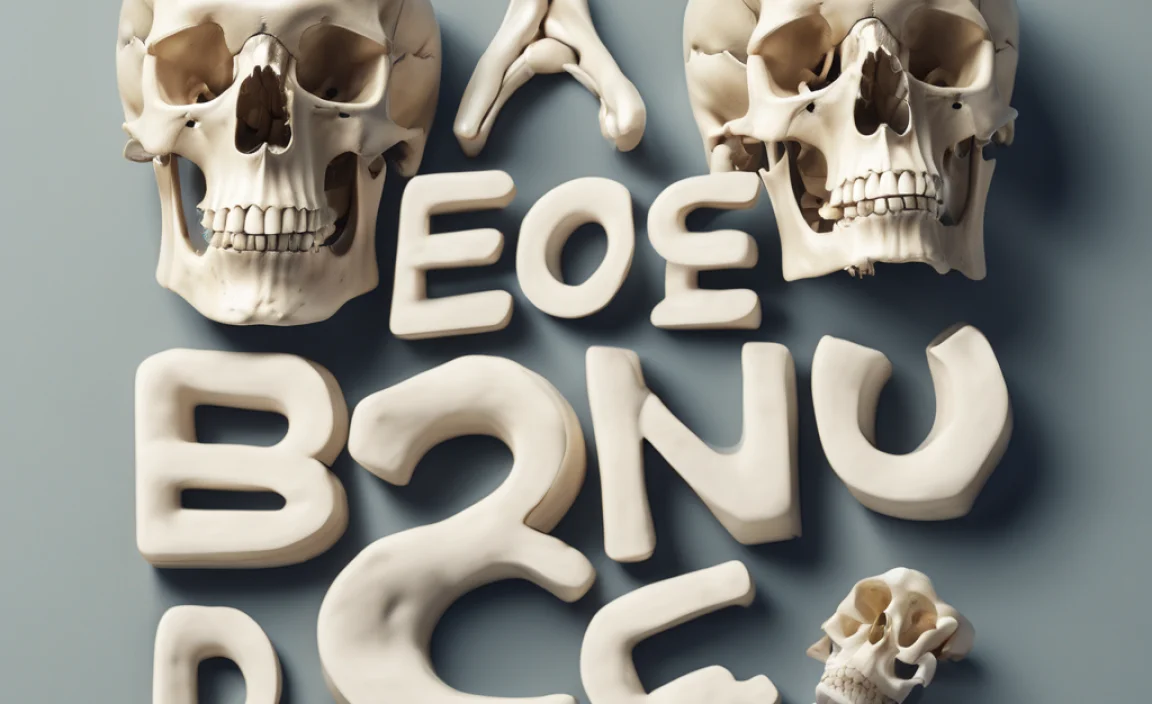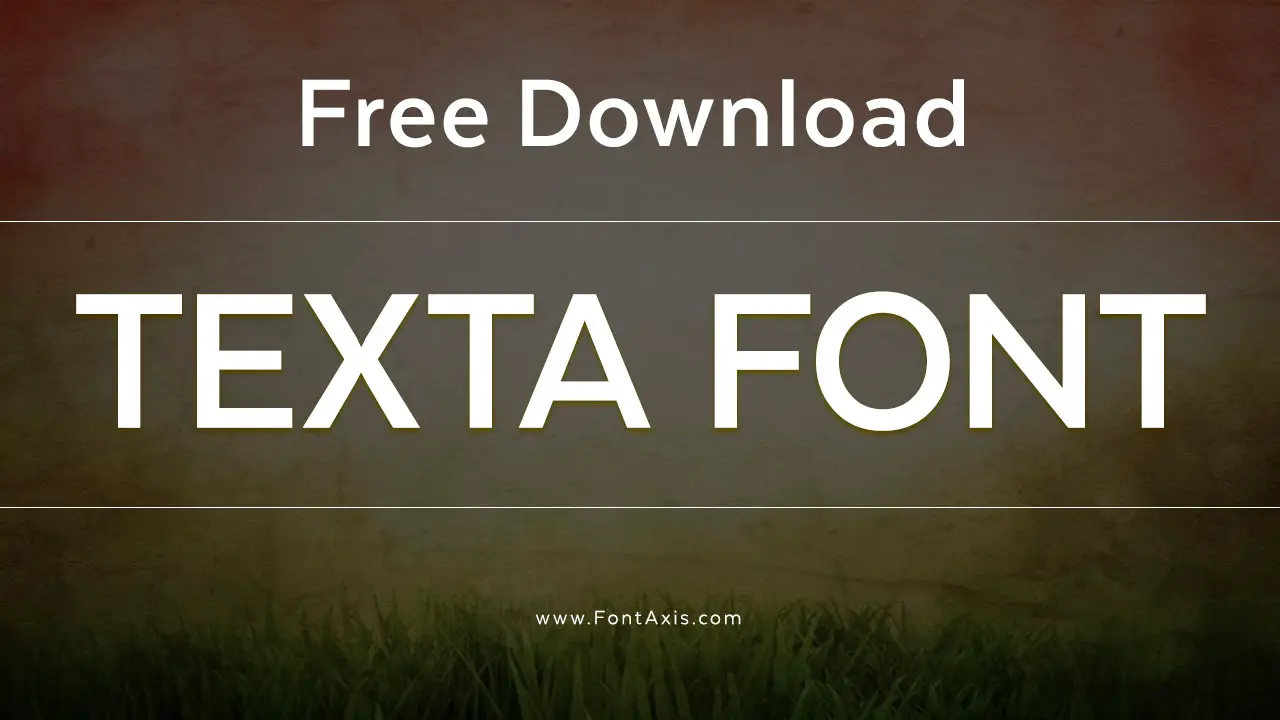This guide helps you master the “Save Your Tears” font style. Learn how to use it effectively for emotional storytelling, branding, and design projects, ensuring readability and impact for any beginner.
Choosing the right font can feel like a huge decision. It’s like picking the perfect outfit for a special event – it needs to look good and say the right thing! Sometimes, a font might seem a little tricky to work with, or maybe you’ve heard of a popular one like “Save Your Tears” and aren’t sure how to make it shine. Don’t worry, it’s a common feeling! Many designs stumble when they can’t quite capture the right mood or keep things clear for their audience. But there’s good news: with a few simple tips and a clear path forward, you can master any font, including “Save Your Tears,” and make your projects look amazing. We’re going to explore its unique style and unlock its potential together, piece by piece. Ready to make your designs speak volumes?
Understanding the “Save Your Tears” Font: A Deep Dive
The “Save Your Tears” font isn’t just a name; it’s a style that evokes a specific artistic feeling. Often associated with a melancholic, yet somehow beautiful, aesthetic, this font style typically leans towards a handwritten or brush-script look. Think of it as fonts that capture raw emotion, like a gentle tear rolling down a cheek, but in a way that’s artistic rather than just sad. This style is fantastic for projects where you want to convey deep feelings, tell a personal story, or create an intimate atmosphere.
Imagine a designer looking at this font: they see its potential for expressing vulnerability, nostalgia, or even a touch of wistful beauty. It’s not your everyday, clean-cut sans-serif. Instead, it often features delicate strokes, varied line weights, and a natural, flowing rhythm that mimics human handwriting. This makes it incredibly versatile for creative applications, but also means it needs careful handling to ensure it communicates effectively and doesn’t become unreadable.
Key Characteristics of “Save Your Tears” Style Fonts
Fonts that fall under the “Save Your Tears” style share several distinctive traits. Understanding these helps you identify them and know what to expect when using them:
- Handcrafted Appearance: Most prominent is the feeling that the letters were written by hand, often with a brush pen or quill. This gives them an organic, imperfect charm.
- Expressive Strokes: Expect variations in thickness and pressure within the strokes of letters. This adds character and depth, much like real handwriting.
- Flowing and Connected: Many fonts in this style have ligatures and connected letterforms, mimicking the natural flow of writing.
- Emotional Resonance: The overall feel is often one of sincerity, intimacy, and a touch of wistfulness or sentimentality.
- Subtle Imperfections: Small quirks, like slight wobbles or unique shapes, contribute to their authentic, personal touch.
Why “Save Your Tears” Style is Popular
In a digital world often filled with sharp edges and perfect lines, there’s a growing appreciation for the authentic and human. Fonts like “Save Your Tears” tap into this desire for genuine connection. They allow creatives to inject a personal touch, making their work feel more relatable and impactful. Whether it’s for album art, event invitations, or personal blogs, this font style offers a unique way to express nuanced emotions and create a memorable aesthetic.
Where to Find Fonts in the “Save Your Tears” Style
The good news is that you don’t need to be a calligraphy master to achieve this style! Many talented font designers have created beautiful typefaces that capture the essence of “Save Your Tears.” Here’s where you can discover them:
Popular Platforms for Script and Display Fonts
These platforms are treasure troves for unique fonts, including those with a “Save Your Tears” feel:
- Google Fonts: A fantastic free resource with a wide selection of open-source fonts. You can filter by style, but often you’ll need to browse script or display categories and look for styles that fit.
- Adobe Fonts: If you have an Adobe Creative Cloud subscription, you have access to a vast library of high-quality fonts, including many expressive scripts.
- MyFonts: One of the largest marketplaces for fonts, offering both commercial and free options. Their extensive search and categorization make it easier to find specific styles.
- Creative Market: A popular platform for designers to buy and sell assets, including a huge variety of unique, often handcrafted fonts.
- Dafont & Font Squirrel: These sites offer many free fonts for personal and sometimes commercial use. Be sure to check the licenses carefully!
When searching, use terms like “brush script,” “emotional script,” “handwritten font,” “calligraphy font,” or “expressive script.” You might not find an exact font named “Save Your Tears” everywhere, but these descriptions will lead you to similar styles.
Using “Save Your Tears” Font Effectively: Best Practices
This font style is beautiful, but its expressiveness means it requires a thoughtful approach. Here’s how to make it work for you:
1. Consider Readability Above All
This is the golden rule for any font, but especially for expressive scripts. “Save Your Tears” style fonts can sometimes be challenging to read in large blocks of text or at very small sizes.
- Use for Headlines and Accents: It shines best when used for titles, short phrases, or as an accent to more readable body text.
- Test Different Sizes: Always preview your chosen font at the intended size and zoom out to see how it looks from a distance.
- Avoid Small Caps: Many script fonts don’t render well when converted to all caps.
2. Pair Wisely with Complementary Fonts
To ensure your design is balanced and readable, pair your “Save Your Tears” style font with a font that offers contrast and clarity.
Good Pairing Strategies:
- Classic Serif: A timeless serif font can provide a grounded, elegant feel that supports the script’s expressiveness without competing with it.
- Clean Sans-Serif: A simple, minimalist sans-serif is an excellent choice for body text, offering maximum readability and letting the script font take center stage.
- Monospaced Font (for a unique contrast): For a more avant-garde look, a monospaced font can offer an interesting juxtaposition.
Fonts to Avoid Pairing With:
- Overly Decorative Fonts: Avoid pairing with other highly decorative or busy fonts, as this can create visual clutter.
- Similar Script Fonts: Don’t pair it with another script font unless they are specifically designed to complement each other.
3. Setting the Tone and Mood
The “Save Your Tears” style is inherently emotional. Use this to your advantage:
- Personal Projects: Ideal for personal journals, scrapbooks, invitations for heartfelt events (like anniversaries or intimate weddings), or personal brand collateral.
- Creative Content: Perfect for poetry, song lyrics, artistic statements, or any content that requires an emotional connection.
- Branding with Depth: If your brand is about vulnerability, authenticity, artisanal crafts, or deeply personal stories, this font style can be a powerful tool.
4. Technical Considerations
When working with fonts, especially scripts, a few technical aspects can make a big difference:
- Kerning: This is the spacing between individual letters. Some script fonts come with excellent default kerning, but you might need to adjust it manually to ensure letters connect smoothly and don’t overlap awkwardly.
- Ligatures: These are special characters where two or more letters are joined together. Many script fonts use ligatures to create a more natural, flowing look. Make sure your software supports them.
- File Formats: Ensure you download the font in a usable format (like .OTF or .TTF for desktop use, or web fonts for websites).
For web usage, consider the impact on loading times. Google Fonts and Adobe Fonts are optimized for speed. If you download fonts from other sources, be aware of file sizes.
“Save Your Tears” Font Style in Action: Use Cases and Examples
Let’s look at where this emotive font style can truly shine:
1. Wedding and Event Invitations
A “Save Your Tears” style script is perfect for a sentimental wedding invitation, a special anniversary card, or a baby shower announcement. It conveys warmth, love, and a touch of romance. Imagine it for “Save the Date” cards or RSVP details for an intimate gathering.
2. Personal Branding for Creatives
Artists, writers, photographers, and therapists who want to project authenticity and approachability can use this font for their logos, business cards, or website headers. It signals that their work is personal and heartfelt.
3. Album Art and Book Covers
Musicians creating introspective or emotional music, or authors writing poignant stories, can use this font to immediately convey the mood of their work through their cover art. It hints at the depth within.
| “Save Your Tears” Style Font (e.g., a brush script) | Intended Use | Complementary Font (for best readability) | Complementary Font Use | Overall Mood/Effect |
|---|---|---|---|---|
| Melancholy Script | Headline, Title, or Short Quote | Open Sans (Sans-Serif) | Body Text | Emotional and relatable. Clear call to action or information. |
| Wistful Brush Script | Logo Element or Signature | Merriweather (Serif) | Subheadings, supporting text | Elegant and sincere. Professional with a personal touch. |
| Heartfelt Handwritten Font | Call to Action (e.g., “RSVP”) | Lato (Sans-Serif) | Website Navigation, Button Text | Approachable and inviting. Easy to engage with. |
| Artistic Script | Quote or Inspirational Text | Lora (Serif) | Blog Post Body Text, Articles | Reflective and story-driven. Encourages deeper reading. |
4. Social Media Content
Inspirational quotes, personal reflections, or announcements for an artisanal product can benefit from the evocative nature of this font style on platforms like Instagram or Pinterest.
5. Personal Blogs and Journals
For blogs focusing on personal experiences, mental health, art, or lifestyle, this font can create a consistent, intimate voice throughout the site.
Tools for Working with Expressive Fonts
Beyond font files, several tools can help you incorporate and refine your “Save Your Tears” style fonts:
- Design Software: Programs like Adobe Photoshop, Illustrator, or Affinity Designer offer robust text editing capabilities. You can adjust kerning, leading (line spacing), and manually tweak letter forms.
- Canva or Crello: These user-friendly online design tools have vast font libraries, including many script options. They are excellent for beginners who want to create social media graphics, flyers, or invitations quickly. Their templates often feature good font pairing examples.
- Font Management Software: For those working with many fonts, programs like FontBase or Suitcase Fusion can help you organize, preview, and activate fonts efficiently.
- Online Font Pairing Tools: Websites like Fontjoy or Google Fonts’ own pairing generator can offer suggestions for complementary fonts, making the process much simpler.
Remember that the best tools are those that fit your workflow and skill level. For a beginner exploring the “Save Your Tears” style, starting with Canva or Google Fonts is a great way to experiment without getting bogged down in technicalities.
Maintaining Readability: A Deeper Look at Script Font Challenges
The charm of script fonts like those in the “Save Your Tears” style lies in their fluidity and expressiveness, but these very qualities can sometimes lead to poor readability, especially in digital contexts. Understanding these challenges is the first step to overcoming them.
Common Readability Pitfalls
- Overlapping Letters: Without proper kerning or if the font’s design isn’t optimized, letters can run into each other, making words difficult to decipher.
- Low Contrast: Some scripts use very thin strokes or a lot of flourishes that can disappear against busy backgrounds or at small sizes.
- Difficult Letter Recognition: Unique, highly stylized letterforms can be hard for the eye to process quickly, slowing down comprehension.
- Inconsistent Baseline: Some hand-drawn styles intentionally have letters that don’t sit perfectly on a straight line, adding character but potentially hindering readability in longer texts.
Strategies for Enhancing Readability
Here are concrete steps you can take to ensure your chosen font is both beautiful and understandable:
- Prioritize Display Text: As mentioned, use these fonts for headings, logos, short titles, or decorative elements where they are seen briefly. The majority of your content should be in a highly readable font.
- Sufficient Font Size: Always ensure the font is large enough for its intended purpose. For web content, this often means at least 16px for body text, but for display scripts, you might need more depending on the font.
- Generous Line Spacing (Leading): Script fonts often benefit from more space between lines of text than standard fonts. This separation prevents ascenders (like the top of ‘h’ or ‘t’) from colliding with descenders (like the bottom of ‘p’ or ‘y’) of the line above. Aim for 1.5 to 2 times the font size for line spacing if possible.
- Strategic Use of Ligatures and Alternates: While ligatures enhance flow, sometimes they can distract. Some fonts offer stylistic alternates that might be more readable. Experiment with these features. Adobe InDesign, for example, has very fine control over these typographic elements.
- Background Contrast: Always ensure there is strong contrast between your text color and background color. White text on a dark background, or dark text on a light background, is generally best. Avoid placing delicate script fonts over complex images where they can get lost. Consider a solid color background or a subtle gradient for the text area.
- User Testing: If possible, get feedback from others. Ask friends, colleagues, or potential audience members to read your text and see if they find any parts hard to understand. This real-world feedback is invaluable.
Beyond the Name: The “Save Your Tears” Philosophy in Design
The “Save Your Tears” font style, and the sentiment it evokes, points to a broader design philosophy: embracing vulnerability and authenticity to create deeper connections. In a world that often glorifies perfection, there’s a growing appreciation for the raw, the real, and the emotional.
When you choose a font that carries this kind of emotional weight, you’re not just selecting typography; you’re communicating a feeling. This requires a conscious decision to be open and genuine in your design. It’s about using design to express something heartfelt, allowing your audience to connect with your message on a deeper, more personal level.
This philosophy extends beyond just visual design. It’s about understanding that beauty can be found in imperfections, that strength can come from vulnerability, and that true connection happens when we allow ourselves to be seen authentically. For designers, this translates to creating work that resonates, that tells a story, and that leaves a lasting emotional imprint.
Consider projects where this philosophy is key::
- Mental Health Awareness Campaigns: Using fonts that convey empathy and understanding can make these crucial messages more accessible.
- Personal Memoirs and Autobiographies: These stories are inherently about the author’s journey and vulnerabilities. A fitting font amplifies this.
- Artisan and Handmade Brands: Emphasizing the human touch and the story behind craftsmanship aligns perfectly with this expressive style.
- Non-profit Organizations focused on Empathy: Charities dealing with sensitive issues often benefit from designs that communicate care and compassion.
In essence, the “Save Your Tears” font style is a tool that helps designers communicate a particular kind of emotional narrative. It invites the audience to lean in, to feel, and to connect with a message that feels less like a transaction and more like a conversation.
Frequently Asked Questions (FAQs) about “Save Your Tears” Font Style
What exactly is the “Save Your Tears” font style?
The “Save Your Tears” font style refers to a category of expressive, often handwritten or brush-script fonts that convey a sense of emotion, sentimentality, or gentle melancholy. They are characterized by flowing strokes, natural imperfections, and an artistic, personal feel.
Is it suitable for body text or only for headlines?
Generally, fonts in the “Save Your Tears








